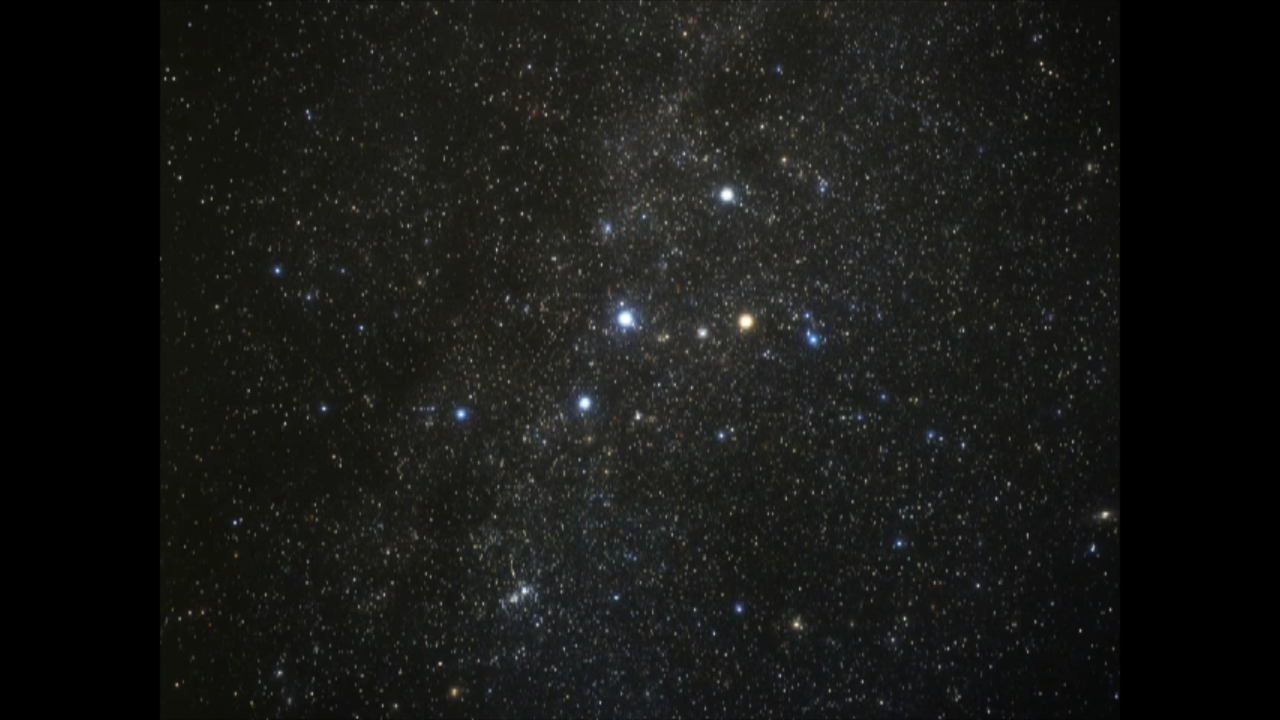1 min read
Nearby Dust Clouds in the Milky Way

The yearly ritual of spring cleaning clears a house of dust as well as dust "bunnies," those pesky dust balls that frolic under beds and behind furniture. NASA's Hubble Space Telescope has photographed similar dense knots of dust and gas in our Milky Way Galaxy. This cosmic dust, however, is not a nuisance. It is a concentration of elements that are responsible for the formation of stars in our galaxy and throughout the universe.
These opaque, dark knots of gas and dust are called "Bok globules," and they are absorbing light in the center of the nearby emission nebula and star-forming region, NGC 281. The globules are named after astronomer Bart Bok, who proposed their existence in the 1940's.
Bok hypothesized that giant molecular clouds, on the order of hundreds of light-years in size, can become perturbed and form small pockets where the dust and gas are highly concentrated. These small pockets become gravitationally bound and accumulate dust and gas from the surrounding area. If they can capture enough mass, they have the potential of creating stars in their cores; however, not all Bok globules will form stars. Some will dissipate before they can collapse to form stars. That may be what's happening to the globules seen here in NGC 281.
Near the globules are bright blue stars, members of the young open cluster IC 1590. The cluster is made up of a few hundred stars. The cluster's core, off the image towards the top, is a tight grouping of extremely hot, massive stars with an immense stellar wind. The stars emit visible and ultraviolet light that energizes the surrounding hydrogen gas in NGC 281. This gas then becomes super heated in a process called ionization, and it glows pink in the image.
The Bok globules in NGC 281 are located very close to the center of the IC 1590 cluster. The exquisite resolution of these Hubble observations shows the jagged structure of the dust clouds as if they are being stripped apart from the outside. The heavy fracturing of the globules may appear beautifully serene but is in fact evident of the harsh, violent environment created by the nearby massive stars.
The Bok globules in NGC 281 are visually striking nonetheless. They are silhouetted against the luminous pink hydrogen gas of the emission nebula, creating a stark visual contrast. The dust knots are opaque in visual light. Conversely, the nebulous gas surrounding the globules is transparent and allows light from background stars and even background galaxies to shine through.
These images were taken with Hubble's Advanced Camera for Surveys in October 2005. The hydrogen-emission image that clearly shows the outline of the dark globules was combined with images taken in red, blue, and green light in order to help establish the true color of the stars in the field. NGC 281 is located nearly 9,500 light-years away in the direction of the constellation Cassiopeia.
About the Object
- R.A. PositionR.A. PositionRight ascension – analogous to longitude – is one component of an object's position.00h 53m 4.58s
- Dec. PositionDec. PositionDeclination – analogous to latitude – is one component of an object's position.56° 38' 18.0"
- ConstellationConstellationOne of 88 recognized regions of the celestial sphere in which the object appears.Cassiopeia
- DistanceDistanceThe physical distance from Earth to the astronomical object. Distances within our solar system are usually measured in Astronomical Units (AU). Distances between stars are usually measured in light-years. Interstellar distances can also be measured in parsecs.9,500 light-years (2.9 kiloparsecs)
- DimensionsDimensionsThe physical size of the object or the apparent angle it subtends on the sky.Roughly 2.4 arcminutes (6.5 light-years or 2 parsecs) wide
About the Data
- Data DescriptionData DescriptionProposal: A description of the observations, their scientific justification, and the links to the data available in the science archive.
Science Team: The astronomers who planned the observations and analyzed the data. "PI" refers to the Principal Investigator.This image was created from HST data from proposal 10713 K. Noll, H. Bond, C. Christian, L. Frattare, F. Hamilton, Z. Levay, M. Mutchler, W. Januszewski, and T. Royle (Hubble Heritage Team/STScI/AURA) and P. McCullough (STScI). - InstrumentInstrumentThe science instrument used to produce the data.HST>ACS/WFC
- Exposure DatesExposure DatesThe date(s) that the telescope made its observations and the total exposure time.October 31, 2005, Exposure Time: 2.1 hours
- FiltersFiltersThe camera filters that were used in the science observations.F435W (B), F555W (V), F658N (H alpha), F814W (I)
- Object NameObject NameA name or catalog number that astronomers use to identify an astronomical object.Bok globules in NGC 281
- Object DescriptionObject DescriptionThe type of astronomical object.Bok Globules in NGC 281
- Release DateApril 4, 2006
- Science ReleaseNearby Dust Clouds in the Milky Way
- Credit

This image is a composite of many separate exposures made by the ACS instrument on the Hubble Space Telescope using several different filters. Three filters sample broad wavelength ranges; one isolates the light of hydrogen. The color results from assigning different hues (colors) to each monochromatic image. In this case, the assigned colors are: Blue: F435W (B) Green: F555W (V) Red-orange: F658N (H alpha) Red: F814W (I)

Related Images & Videos

Zoom in to Dust Globules in NGC 281
Dense knots of gas and dust located in the center of NGC 281 form jagged structures that are exquisitely resolved by the Hubble Space Telescope's Advanced Camera for Surveys. This zoom dives deep into the Cassiopeia constellation, then dissolves into a wide view of NGC 281....
Share
Details
Claire Andreoli
NASA’s Goddard Space Flight Center
Greenbelt, Maryland
claire.andreoli@nasa.gov






























